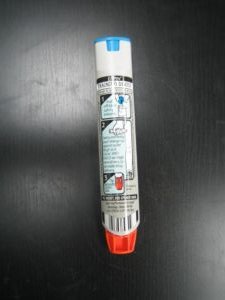Natural rubber latex is a milk-like fluid found in rubber trees. The issue is not with the rubber, but a contaminating protein present in the rubber. It is important to note that natural rubber latex is utilized in creating gloves, balloons, condoms, erasers, rubber bands and toys. It is also present in pacifiers and bottle nipples. It is surprising to note that latex paints do not contain any natural rubber latex protein.
It was only in the late 1980s when latex allergy gained attention when healthcare workers started using the powdered latex gloves to control infections. In the 1990s, manufacturers found ways to produce gloves using synthetic latex, thus reducing the cases of latex allergy.
Reaction to latex

The allergy symptoms are triggered by a chain reaction started by the immune system. If an individual has latex allergy, the immune system identifies the protein in latex as a threat. The immune system overly reacts by producing antibodies that are responsible for the release of chemicals that trigger the symptoms.
- Hives or urticaria
- Flushing or itching
- Swelling
- Runny nose
- Sneezing episodes
- Cough
- Wheezing and shortness of breath
- Nausea
- Chest tightness
- Dizziness or lightheadedness
Any combination of these symptoms can indicate anaphylaxis which is a life-threatening reaction that entails immediate medical attention.
Treatment
The initial step in managing latex allergy is to be aware of the issue. A doctor or allergist should be consulted to assess the condition and develop a suitable treatment plan.
In most cases, the doctor will prescribe an antihistamine for mild symptoms. Epinephrine is also prescribed that must be readily on hand at all times in cases a severe reaction to latex occurs. The doctor will decide whether the individual should wear a medical bracelet or necklace to alert others of his/her allergy.
In case the allergy is severe, the individual should inform family, friends and employer about the allergy. When surgery is performed, the individual should inform the doctor of his/her latex allergy.
If the individual experiences difficulty breathing when around latex, he/she must stay away from areas where powdered gloves are used and avoid any form of direct contact with latex.
If the individual is required to wear gloves, try using vinyl or nitrile gloves. The synthetic latex gloves that do not contain natural latex can also be used. These alternatives work in almost all scenarios including surgery, but they are more expensive. Latex-based condoms can trigger serious allergic reaction in some individuals.
Who are at risk?
Healthcare and rubber industry workers face the highest risk for developing severe allergic reactions to latex. Individuals who undergone several medical procedures or surgeries also face a higher risk. This is due to the fact that the highest danger of a severe reaction occurs when latex is in contact with moist areas of the body such as during surgery.
If an individual is diagnosed with latex allergy, he/she is at higher risk to be allergic to certain foods including avocados, bananas, European chestnuts and kiwi fruit. Remember that these foods and latex share certain proteins that can trigger a reaction.
